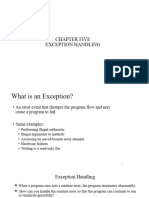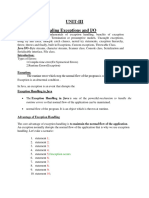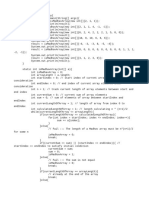0% found this document useful (0 votes)
28 views87 pagesException Handling
The document discusses exception handling in Java, explaining how it allows programs to manage runtime errors and continue execution. It covers the types of exceptions, the process of throwing and catching exceptions, and the importance of declaring exceptions in methods. Additionally, it highlights the advantages of exception handling, including separating error detection from handling and the use of try-catch blocks to manage exceptions effectively.
Uploaded by
poojamp450Copyright
© © All Rights Reserved
We take content rights seriously. If you suspect this is your content, claim it here.
Available Formats
Download as PDF, TXT or read online on Scribd
0% found this document useful (0 votes)
28 views87 pagesException Handling
The document discusses exception handling in Java, explaining how it allows programs to manage runtime errors and continue execution. It covers the types of exceptions, the process of throwing and catching exceptions, and the importance of declaring exceptions in methods. Additionally, it highlights the advantages of exception handling, including separating error detection from handling and the use of try-catch blocks to manage exceptions effectively.
Uploaded by
poojamp450Copyright
© © All Rights Reserved
We take content rights seriously. If you suspect this is your content, claim it here.
Available Formats
Download as PDF, TXT or read online on Scribd
/ 87























































































